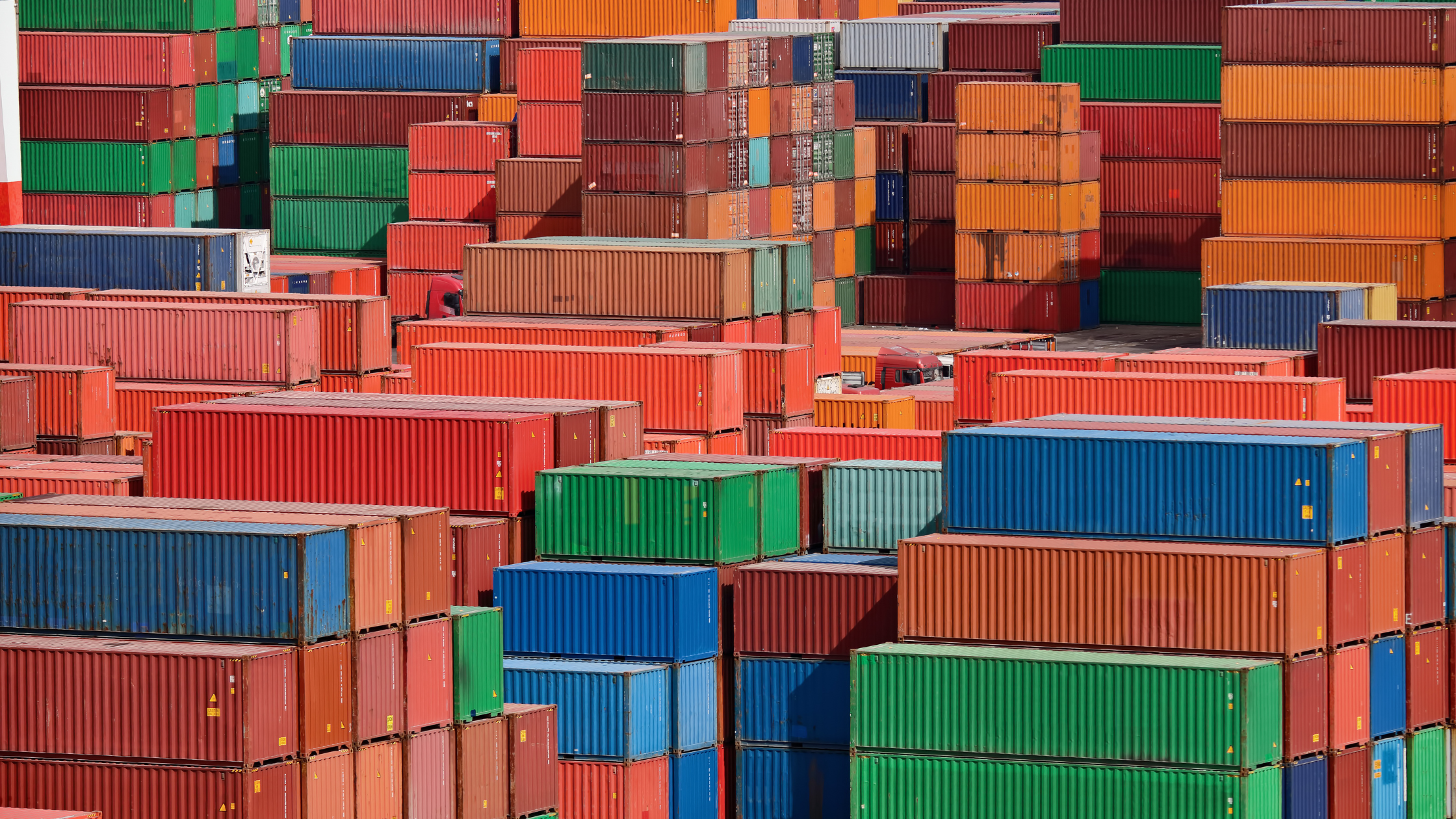Physical Address
304 North Cardinal St.
Dorchester Center, MA 02124

The COVID-19 pandemic changed global shipping routes in significant ways. It challenged the logistics industry to adapt to disruptions like port closures, labor shortages, and rising costs. Today, companies face new challenges and opportunities driven by changing consumer habits, technological advancements, and geopolitical tensions.
Read on to find out about the main forces shaping shipping routes, the move towards shorter regional paths, and how companies are adapting to succeed.
The pandemic exposed weaknesses in global supply chains. Ports closed, labor became scarce, and operational costs went up. According to Robert Khachatryan, container freight rates jumped drastically:
“Global container shipping costs significantly rose at the height of the pandemic, forcing companies to explore alternative, more efficient routes. According to Statista, container freight rates fluctuated significantly between January 2023 and August 2024. The lowest rate for a 40-foot container was $1,342 in October 2023, but by July 2024, it soared to over $5,900, the highest on record. The global supply chain, already fragile, was severely impacted by the COVID-19 pandemic, with disruptions like port closures, labor shortages, and container shortages continuing to affect the industry.”

These cost hikes made companies rethink their shipping strategies. They needed creative solutions to lower costs while dealing with higher operational expenses. Clooney Wang noted how e-commerce growth continues to affect shipping routes:
“The surge in online shopping during the pandemic has persisted, increasing the need to ship goods faster to meet customer expectations. Tech advancements, especially AI-powered shipment routing, enable more companies to optimize their routes so goods can reach their destinations faster.”
Rising shipping rates and growing consumer demands push logistics firms to innovate. They need to move goods quickly but also keep costs low.
To adapt to these pressures, many companies are choosing shorter, regional shipping routes. This shift helps reduce risks, shorten delivery times, and improve reliability, all of which are crucial as industries adjust to new realities.
Khachatryan pointed out:
“There is a noticeable shift toward shorter, regional shipping routes, particularly in Asia and Europe. This is driven by the need to reduce transit times, mitigate supply chain risks, and improve reliability. The volume of containers at most major ports is reverting to levels seen before the pandemic, following the record highs of 2022, when manufacturers significantly boosted their inventory in response to robust consumer demand.”
Companies find that regional routes work better when dealing with unpredictable consumer habits, labor issues, and changing logistics needs. Clooney Wang agreed:
“As e-commerce becomes a mainstay and customers expect quick delivery, we are witnessing a permanent shift towards shorter and more regional routes. Online retail brands consistently seek a competitive advantage; faster shipping allows them to stand out.”
These regional shifts are also a response to changes in the economy and global politics. Companies must adjust to these factors to keep operations running smoothly. Many firms are now building regional hubs and establishing local partnerships to diversify their supply chains, reducing the dependency on single, global routes. This kind of diversification helps create resilience, allowing companies to manage supply chain disruptions more effectively.
Geopolitical issues are also reshaping shipping routes. The U.S.-China trade war, the Ukraine conflict, and tensions in Gaza force companies to reconsider their routes. Many are choosing paths that avoid areas with political instability to lower risks and ensure smooth operations.
Khachatryan shared insights:
“Geopolitical uncertainty is jeopardizing key shipping routes, placing over 50% of global maritime trade at risk of disruption. Escalating tensions in Ukraine and Gaza have led to restricted airspace and rerouted flights, significantly impacting global airfreight operations. Longer flight paths due to conflict zones have increased operational costs, sometimes adding several hours and thousands of dollars to routes.”
Clooney Wang highlighted how these tensions influence decisions:
“Geopolitical tensions, especially between the US and China, and the entering into trade agreements also influence which routes companies can use, resulting in many of them seeking new routes or choosing longer or shorter ones depending on their alignment.”
In this environment, flexibility is key. Companies need solid risk management, contingency plans, and adaptable logistics strategies to handle uncertainties. Some firms are increasing their focus on risk management by developing contingency plans, maintaining buffer stocks, and ensuring they have access to multiple carriers. This proactive approach helps minimize the impact of disruptions and keeps supply chains functioning.
The contrast between the increased operational costs and record-high profit margins achieved during parts of the pandemic provides a dual perspective on industry challenges. Many container carriers benefited financially during the pandemic due to the surge in shipping rates, even as operational difficulties mounted. These profit gains were often the result of cost-cutting measures, increased freight rates, and prioritizing high-value shipments. However, as container rates began to stabilize, companies faced the need to further streamline operations and find new efficiencies without relying on extraordinary rate hikes.
The note about container volume returning to pre-pandemic levels after the highs of 2022 suggests that manufacturers are adapting their inventory strategies. During the pandemic, companies heavily stockpiled to cope with unpredictable supply chain disruptions. Now, many are focusing on more balanced inventory management, employing strategies like “just-in-time” and “just-in-case.” Just-in-time strategies help companies minimize excess inventory, while just-in-case strategies ensure they have sufficient stock to handle sudden changes in demand. This shift in inventory strategies directly influences the logistics and shipping industry, impacting how routes are planned and the speed at which goods need to move.
Bulkargo, a leading logistics firm, is adapting to these changes by focusing on vessel chartering and regional shipping routes. This approach allows them to meet client demands demands for fast, reliable logistics while maintaining cost efficiency. Vessel chartering provides Bulkargo’s clients with the flexibility to adjust their capacity based on demand, ensuring they can meet changing customer needs effectively.
Bulkargo is also tackling geopolitical risks by diversifying its routes. They invest in regional distribution networks and strengthen risk management to stay reliable and cost-effective. By maintaining a proactive stance on risk and leveraging strategic vessel charters, Bulkargo ensures they can continue to deliver value to their customers despite the uncertainties present in the global shipping landscape.
Global shipping is changing because of higher costs, shifting consumer demands, new tech, and geopolitical risks. The trend towards shorter, regional routes will continue. Companies like Bulkargo are using vessel chartering, risk strategies, and regional focus to stay competitive. By prioritizing reliability and efficiency, these firms can handle global market changes and grow despite challenges.s.
Robert Khachatryan is the CEO of Freight Right Global Logistics, with expertise in ocean freight visibility, supply chain design, e-commerce shipping, freight marketplaces, and booking automation. His insights help explain current trends in the logistics industry.
Clooney Wang is the CEO of TrackingMore, an end-to-end shipment tracking platform for logistics providers and e-commerce companies.